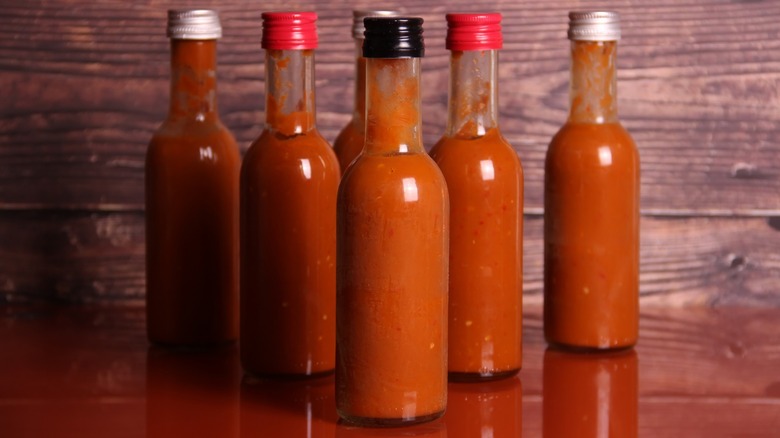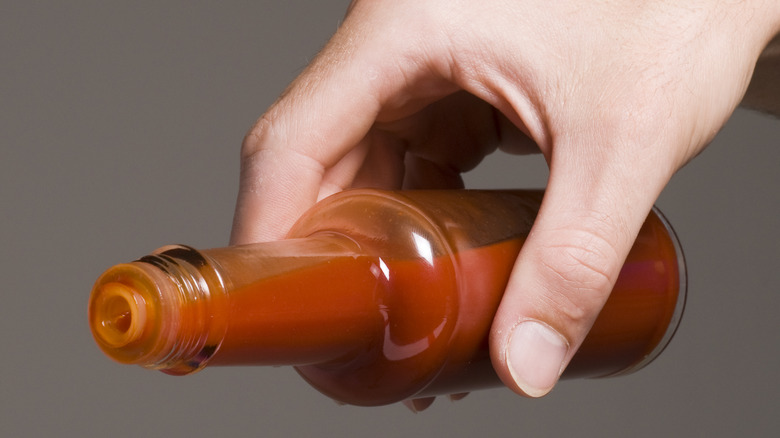Why It's A Mistake To Store Hot Sauce In Direct Sunlight
Hot sauce storage is a heated topic, to say the least. Some swear by keeping bottles crisp and cool in the fridge, while others argue that hot sauce can be safely kept at room temperature for an extra fiery kick. If you're a believer of the latter, rest assured that many commercially produced hot sauces can be stored anywhere you wish — that is, except for somewhere sunny. Hiding beautiful bottles of brightly colored scarlet, golden, or emerald hot sauces might seem like a shame.
But the reality is that keeping these spicy condiments on display isn't actually the best idea, especially if they're stored somewhere that's directly in the path of sunlight. Since many hot sauces are stored in clear bottles or jars where light can easily penetrate through the packaging, excessive exposure to light can be a real threat. Light can cause the sauce to heavily darken and eventually brown. Not to mention that its flavor can start to morph, and, oftentimes, fade in its nuance and spice.
Additionally, propping hot sauce by a window or under a skylight can also prompt bottles of sauce to warm. Rather than simply reducing aesthetics or flavor, the heat that's triggered by the sun's rays (coupled with humidity) can lead to more bacterial growth and rapid spoilage. Avoiding direct sunlight is a must to keep your hot sauce at its best.
The ideal place to store your collection of hot sauces
Just because certain (read: commercial) hot sauces can be kept out at room temperature, that doesn't mean that they can be stored anywhere. Instead of displaying a medley of bottles on your kitchen counter or against a window sill as a decorative accent, opt to store your hot sauces in a dark and cool area. A pantry or cupboard shelf is your best option to preserve colors and flavors to their fullest.
Want to really extend the shelf life of your favorite hot sauces? Whether or not they contain perishable ingredients, nothing beats keeping any kind of hot sauce in the fridge. The only thing to remember is to not flip-flop between storage in the fridge and storage at room temperature as swinging between these extremes can wreak havoc on the zesty condiments, leading to further degradation.
While proper storage will definitely limit negative changes in quality, hot sauce can still go bad. At the first signs of spoilage — extreme discoloration, funky aromas, textural changes, or the presence of mold — don't hesitate to get rid of a bottle. After all, discarding a spoiled sauce means you get to open a newer, fresher, and more vibrant hot sauce in its place!

